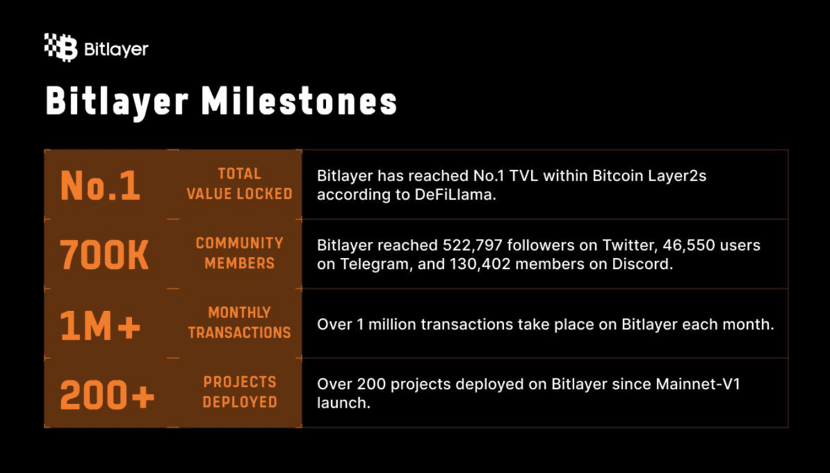One, BitVM Bridge: A trust-minimized cross-chain revolution
The BitVM Bridge launched by Bitlayer is the first practical application of BitVM, with its core being a trust mechanism without centralized custody. Through the 'prepayment + challenge verification' logic of the Bitcoin mainnet, any node can initiate fraud proof, and violators will automatically lose their deposits. After cooperating with mining pools like Antpool and F2Pool, the packing speed for non-standard transactions (NST) has increased by 80%, and the transaction confirmation time has been reduced to within 10 minutes, with zero incidents in processing 120,000 transactions over 3 months on the mainnet. This design anchors cross-chain security directly to the Bitcoin mainnet, completely overturning the traditional trust model of multi-signature bridges.
Two, YBTC: The 'yield double helix' of Bitcoin
YBTC is not only a 1:1 pegged BTC token but also integrates the dual genes of security and yield:
• Security: Minted through BitVM Bridge, all on-chain operations of YBTC are ultimately verified by the Bitcoin mainnet, eliminating custodial risks;
• Yield: Staking for yield on the Sui chain (annualized 8.7%), cross-chain arbitrage on Arbitrum (single transaction yield 0.5-2%), and even participating in NFT liquidity mining on Cardano. Franklin Templeton has converted $116.7 million BTC into YBTC, with annualized yield increased to 6.3%.
Three, Bitlayer Network V2: The 'second brain' of Bitcoin
The V2 version introduces an EVM-compatible layer, allowing developers to directly reuse 90% of Ethereum code and migrate DeFi protocols to the Bitlayer network. Its Rollup architecture achieves 10-millisecond confirmation + 5000 TPS, with transaction fees only 1/50 of the mainnet, supporting real-time DeFi transactions. Currently, 127 projects have completed the migration, including the lending protocol LendFy, which manages $1 billion in assets. More groundbreaking is that V2 compresses data through recursive proofs and writes it into Bitcoin blocks, achieving security equivalent to the Bitcoin main chain, effectively solving the withdrawal risk of sidechain assets.
Four, ecological expansion: The critical point from 'experiment' to 'explosion'
Bitlayer has established partnerships with 13 chains, including Sui, Arbitrum, and Cardano, with YBTC liquidity covering 40% of Bitcoin mining pool computing power. The 'real-world asset gateway' will be launched in Q3 2025, allowing YBTC to directly pay for cloud server rentals and logistics fees, forming a closed loop of 'holding coins is consumption, consumption generates income'. In addition, the 'Booster activity' in cooperation with Binance Wallet has entered its second phase, where users can earn BTR tokens by completing tasks, and the Pre-TGE activity is about to start, with the token economic model designed to incentivize ecosystem participation.
Five, capital support: The 'Bitcoin financial gateway' in the eyes of institutions
Bitlayer has raised nearly $30 million, led by top institutions like Polychain Capital and Franklin Templeton. Franklin Templeton not only invested but also converted $116.7 million BTC into YBTC, becoming an early practitioner of its yield model. This combination of 'traditional asset management + blockchain' marks a new stage in the financialization of Bitcoin. What is even more noteworthy is that Bitlayer's deployment on AWS has achieved an average daily processing of 150,000 transactions, with a total locked value exceeding $550 million, serving 700,000 users and 300 projects, demonstrating scalable potential.
Six, technological breakthroughs: The 'decoupled design' of the BitVM paradigm
Bitlayer's technical architecture is based on BitVM's zero-knowledge proofs and challenge protocol framework, innovatively combining front-end multi-language support with back-end provers:
• Front-end: Supports Solidity and Cairo contracts, reducing developer migration costs by 70%;
• Back-end: ZK-STARK (high throughput) and ZK-SNARK (low cost) switch on demand, improving verification efficiency by 3-5 times. By storing polynomial commitments in Taproot leaf nodes, on-chain data load is reduced by 67%, and the gas cost of a single FRI verification drops from 0.003 BTC to 0.0008 BTC. This design achieves a triple breakthrough for Bitlayer in terms of security, scalability, and developer friendliness.
Seven, future outlook: From 'scalability solutions' to 'value networks'
Bitlayer's ultimate goal is to upgrade Bitcoin into a programmable value network. The V3 version launched in Q4 2025 will achieve 20,000 TPS and 3-second confirmation, supporting enterprise-level applications. At the same time, it collaborates with Plume Network to explore real-world assets (RWA) on-chain, planning to integrate YBTC with scenarios such as supply chain finance and data assets, promoting Bitcoin's leap from 'digital gold' to 'value infrastructure'. For users, converting BTC to YBTC now not only provides yield but also serves as a ticket to participate in the construction of the next-generation financial infrastructure.

Bitlayer is redefining the financial attributes of Bitcoin through BitVM technology, transforming 'digital gold' into programmable 'financial atoms'. The yield mechanism of YBTC, the security architecture of BitVM Bridge, and the deep integration with multiple chains make it a key hub connecting traditional finance and Web3. The benefits of this revolution belong to every pioneer who makes digital assets 'move'.
